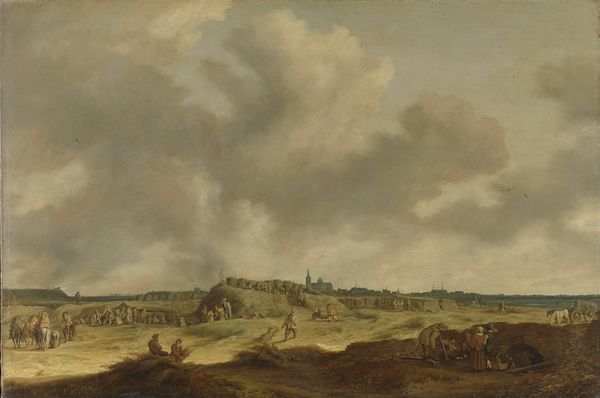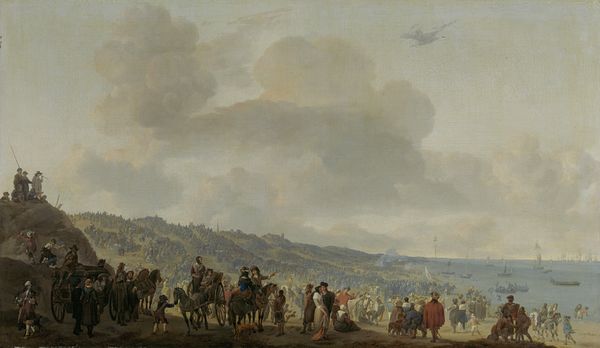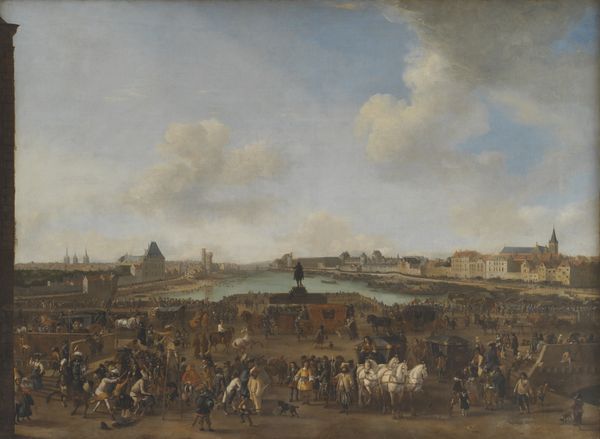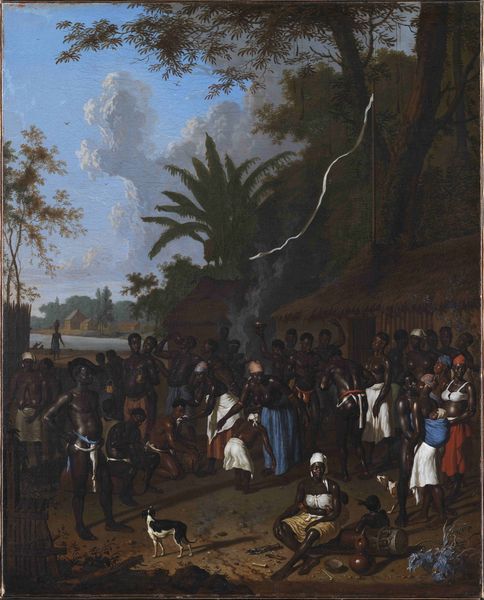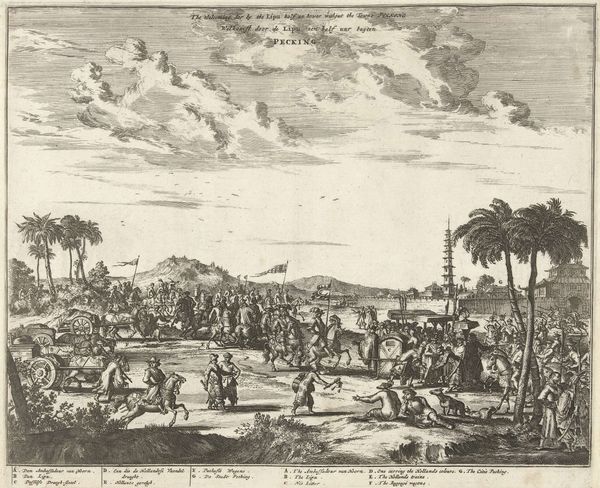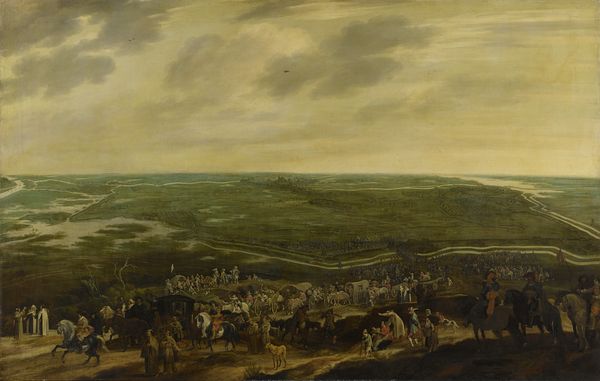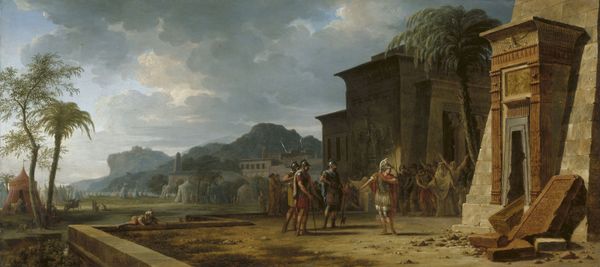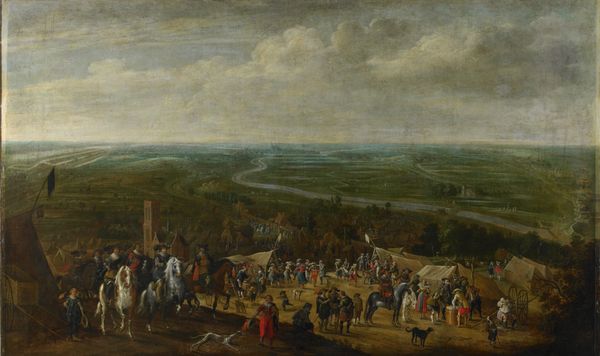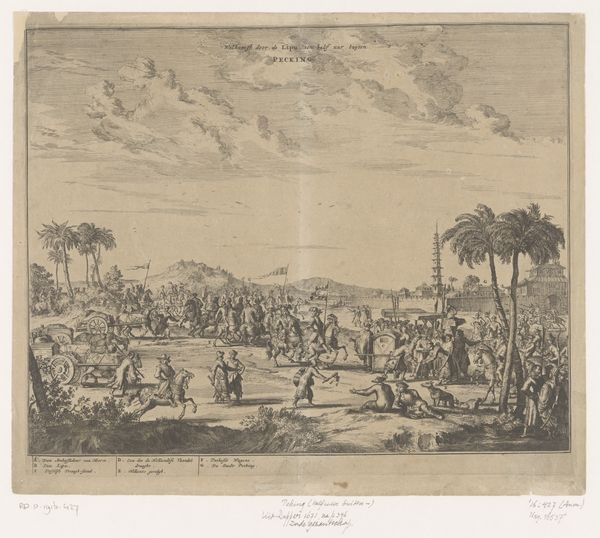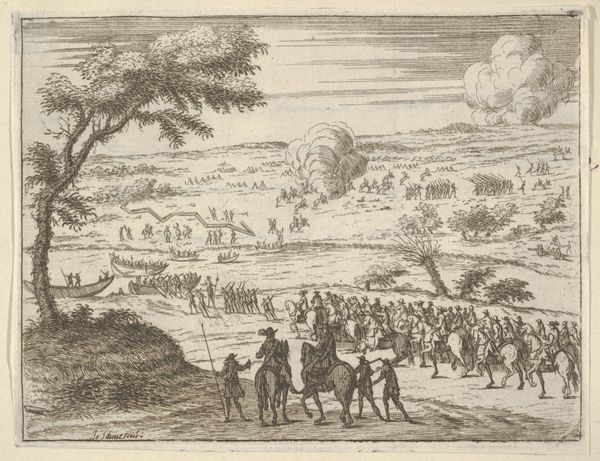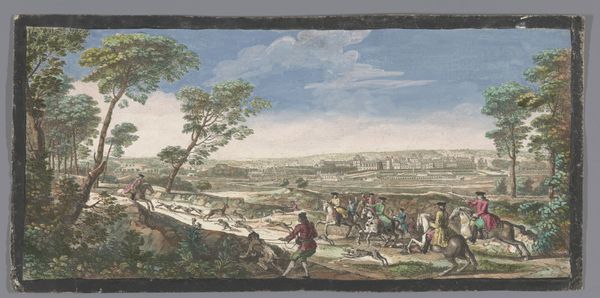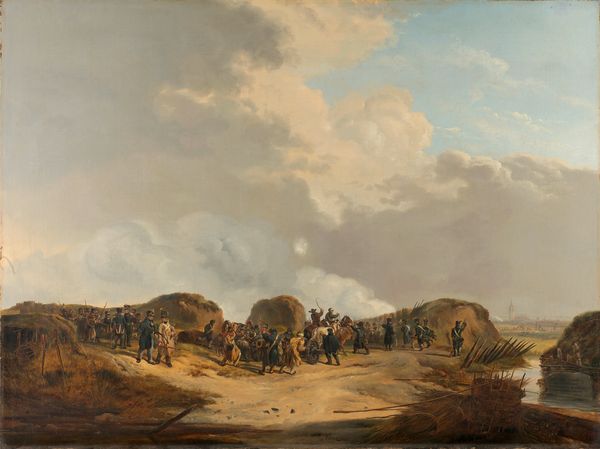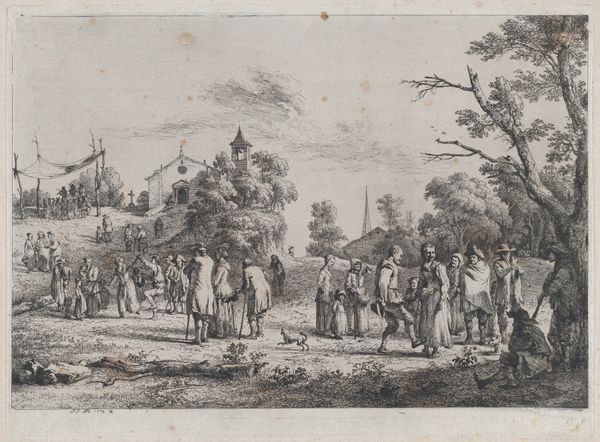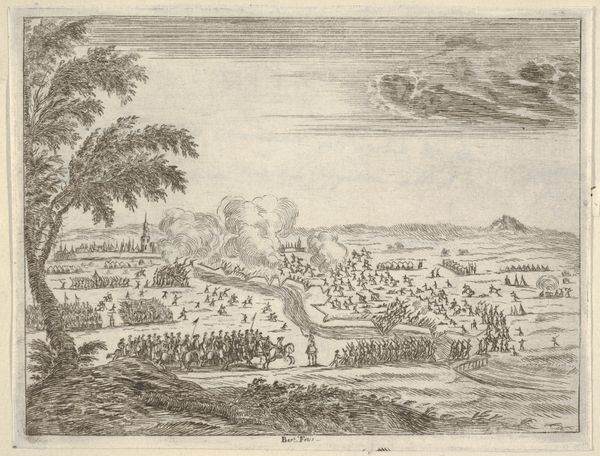
painting, oil-paint
#
baroque
#
dutch-golden-age
#
painting
#
oil-paint
#
landscape
#
oil painting
#
orientalism
#
cityscape
#
genre-painting
Dimensions: support height 108 cm, support width 151.4 cm
Copyright: Rijks Museum: Open Domain
Curator: Here we have Andries Beeckman's "The Castle of Batavia," painted around 1662. It’s an oil painting depicting the cityscape of Batavia, now Jakarta, during the Dutch Golden Age. Editor: Immediately, it gives me a feeling of vastness, but also… stillness. Like a meticulously staged tableau, a theater set for a history play that never begins. The sky feels heavy, doesn’t it? Almost oppressive, despite the light. Curator: I'd argue that feeling comes, in part, from the layering of social structures the piece is meant to display. Look closely at the material culture presented: the architecture of the Castle itself against the more vernacular structures surrounding it, the different modes of dress. Beeckman constructs Batavia as a place defined by hierarchies of labor and governance. Editor: So it’s about power… interesting. I was so drawn to the light and shadows, the painterly quality of the palm trees… But yes, those figures do seem placed, almost like props. Do we know if Beeckman was actually there, experiencing this place firsthand? Or did he work from descriptions, building this world like a colonial architect building a town from a blueprint? Curator: He was indeed in Batavia. Examining Beeckman’s artistic practice, one can see that his work becomes a form of documentation intertwined with the visual rhetoric deployed by the Dutch East India Company, the VOC. It served as both a portrait of a place, and a projection of power back to Europe. The textures of the canvas, the materiality of oil paint, even the specific pigments used, tell a story about trade and resource extraction. Editor: Trade and extraction… it’s difficult to see the sunshine the painting evokes through the lens you offer. It changes the way I experience it, like knowing the secret ingredient of a dish— suddenly, it’s not just delicious, it’s a calculated chemical reaction! Still, even with all the politics, the artist’s eye for composition holds a certain sway, even now. Curator: Ultimately, considering "The Castle of Batavia," beyond its aesthetic qualities allows us to examine how images played a role in shaping, and indeed, enabling colonial ambitions and material realities. Editor: True enough. It seems art, like empire, leaves a complex, often contradictory, legacy. Thank you, it has given me more to think about!
Comments
rijksmuseum about 2 years ago
⋮
Both free and unfree people populate this market in Batavia, with the fortress of the Dutch East India Company (VOC) in the background. At the end of the 17th century, more than half of the city’s inhabitants lived in slavery. Slavery was a centuries-old custom in the Indonesian archipelago, which was taken over, adapted and intensified by the Dutch. Batavia became the central slave market for the region, where both Europeans and Asians traded in human beings.
Join the conversation
Join millions of artists and users on Artera today and experience the ultimate creative platform.
